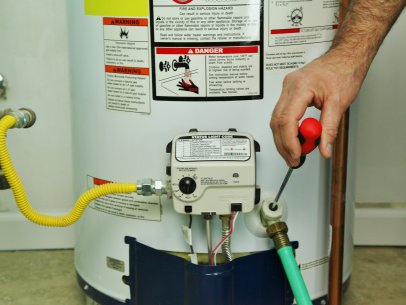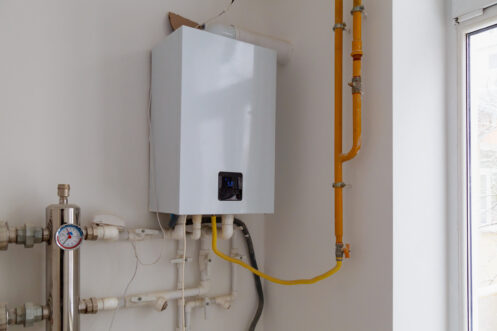Effective Techniques for Maintaining Your Home's Hot Water System
Effective Techniques for Maintaining Your Home's Hot Water System
Blog Article
We've noticed this great article involving Water Heater Maintenance Tips You Can't Afford to Forget listed below on the internet and figured it made perfect sense to write about it with you on this page.

Warm water is necessary for everyday comfort, whether it's for a refreshing shower or cleaning meals. To ensure your warm water system runs successfully and lasts much longer, routine maintenance is essential. This short article provides functional suggestions and understandings on how to keep your home's hot water system to stay clear of interruptions and costly fixings.
Intro
Preserving your home's warm water system may seem challenging, however with a couple of simple actions, you can ensure it operates efficiently for several years to find. This overview covers everything from recognizing your hot water system to do it yourself maintenance pointers and understanding when to employ expert aid.
Value of Preserving Your Warm Water System
Routine maintenance not only extends the life-span of your hot water system but additionally guarantees it operates efficiently. Neglecting upkeep can result in lowered effectiveness, greater power costs, and even premature failing of the system.
Signs Your Hot Water System Needs Upkeep
Understanding when your hot water system needs focus can stop major problems. Look out for indicators such as inconsistent water temperature level, weird sounds from the heating unit, or rusty water.
Understanding Your Hot Water System
Prior to diving into upkeep tasks, it's handy to recognize the fundamental components of your hot water system. Normally, this consists of the hot water heater itself, pipelines, anode rods, and temperature controls.
Monthly Maintenance Tasks
Routine monthly checks can help capture minor issues before they escalate.
Flushing the Water Heater
Purging your water heater gets rid of sediment buildup, enhancing efficiency and extending its life.
Monitoring and Replacing Anode Rods
Anode poles prevent rust inside the container. Checking and changing them when worn out is vital.
Examining and Adjusting Temperature Setups
Adjusting the temperature settings guarantees ideal performance and security.
Do It Yourself Tips for Maintenance
You can execute numerous maintenance tasks yourself to keep your hot water system in leading condition.
Checking for Leaks
Routinely inspect pipes and connections for leaks, as these can result in water damage and greater expenses.
Checking Stress Relief Valves
Testing the stress safety valve ensures it functions correctly and prevents too much stress accumulation.
Shielding Pipelines
Insulating warm water pipelines lowers warm loss and can save power.
When to Call an Expert
While DIY maintenance is beneficial, some problems call for specialist expertise.
Facility Problems Requiring Professional Aid
Examples include significant leaks, electric issues, or if your water heater is consistently underperforming.
Regular Expert Maintenance Conveniences
Expert maintenance can consist of complete inspections, tune-ups, and making certain conformity with safety standards.
Verdict
Routine upkeep of your home's hot water system is crucial for effectiveness, longevity, and price savings. By following these ideas and understanding when to look for specialist assistance, you can ensure a reliable supply of hot water without unanticipated interruptions.
Water Heater Maintenance: The Basics
Maintaining your water heater will ensure it operates efficiently and has a longer lifespan. Neglecting regular maintenance can lead to costly repairs and an even bigger chunk of your savings if you have to replace it sooner than necessary. But there’s good news: Most water heater maintenance tasks are relatively simple and easy for homeowners with basic DIY skills.
Flush the Water Heater
Over time, sediment and minerals can build up in the tank, reducing its efficiency and potentially causing damage. To flush the tank, turn off the power or gas supply, attach a hose to the drain valve near the bottom and open the valve to drain the water until it runs clear. Ideally, flush the tank annually.
Replace the Anode Rod
The anode rod is a sacrificial metal rod that helps prevent corrosion inside the tank. Inspect and replace it every three to five years or per the manufacturer's recommendation. To replace the anode rod, turn off the power or gas supply, drain a few gallons of water from the tank, unscrew the old rod and replace it with a new one. If the anode rod is significantly corroded or covered in calcium buildup, it's a sign the water heater may need to be replaced soon.
Tune-Up
A yearly tune-up can help identify potential issues and ensure your water heater operates at peak efficiency. This typically involves checking the thermostat, burner assembly (for gas heaters) and any other components specified by the manufacturer. During a tune-up, the technician may also clean the burner and adjust the pilot light (for gas heaters) or examine the heating elements (for electric heaters).
How to Maintain Your Water Heater
Insulate the tank. Insulating the tank can improve energy efficiency and reduce heat loss, saving you money on energy bills. You can purchase precut insulation blankets designed specifically for water heaters or use standard fiberglass insulation wrapped securely around the tank. Check the temperature. The recommended water temperature for most households is around 120 degrees Fahrenheit (49 degrees Celsius). Higher temperatures can increase energy costs and potentially cause scalding. Use a kitchen thermometer to check the temperature at the faucet nearest the water heater. Monitor water pressure. Excessive water pressure can strain the water heater and cause leaks or even tank failure. Install a pressure-reducing valve if necessary. The ideal water pressure range is between 60 and 70 PSI (pounds per square inch). Test the temperature and pressure (T&P) relief valve. The T&P relief valve is a safety feature that releases pressure if the tank gets too hot or the pressure builds up too high. Test it annually by lifting the lever and allowing a small amount of water to release. Replace the valve if it doesn't release water or reseal properly. Check for leaks. Regularly inspect the tank, pipes and fittings for leaks or corrosion. Deal with issues promptly to prevent further damage. Even a small leak can lead to significant water damage over time. Consider a tankless water heater. If your traditional tank-style water heater is nearing the end of its lifespan ( typically 10 years), consider replacing it with a tankless water heater. These units heat water on demand, reducing standby energy losses and potentially saving you money on your energy bills. Schedule professional maintenance. While homeowners can perform many water heater maintenance tasks, it's still a good idea to schedule professional maintenance every few years. A plumber or HVAC technician can thoroughly inspect the unit, identify potential issues and ensure it operates safely and efficiently. https://www.homeserve.com/en-us/blog/home-improvement/hot-water-heater-maintanence/

I am very drawn to Tips on Maintaining a Water Heater and I'm hoping you enjoyed reading our blog entry. If you liked our post if you please consider to share it. Thanks a bunch for being here. Revisit us soon.
Request Free Estimate Report this page